West Ham United FC and Millwall FC have a rivalry that is one of the most brutal, bitter, and violent in the history of English football. How did this rivalry start? What ignited this?
Two football clubs with tonnes of history. Two sets of passionate, hardcore fans. And the final ingredient – iron.
Part I – The Irons
It all started with the J.T. Morton Factory.
The J.T. Morton factory was established in Aberdeen in 1849. Their aim was to supply food and tinned goods to traveling ships. By the form of expansion, they opened their first processing plant on the Millwall Dock in South London. As you can imagine with Victorian England, a large attraction in the workforce began not just from London but from across the entire country.
Workers from this dock formed Millwall Athletic. In no hurry, they already sorted themselves in-house, establishing 17-year-old Jasper Sexton as club secretary and Irish international footballer William Murray-Leslie as the club chairman. William Murray-Leslie would go on to make a whopping, astonishing, amazing zero appearances for Millwall.
Millwall’s first match in the footballing world would be a 5-0 defeat to Fillebrook. The in-game errors and shady tactics would be learnt from and Millwall went on to win the following 12 fixtures. By the end of the season, they only had 3 defeats.
The J.T. Morton Factory (pictured in 1932).
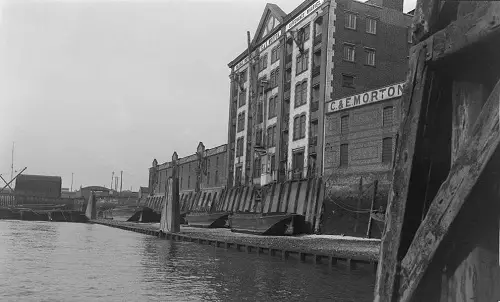
More pictures of Millwall Docks – https://www.british-history.ac.uk/survey-london/vols43-4/plate-56
Ten years had gone by. Thames Ironworks and Shipbuilding Company were breaking their backs day in and day out.
They were London’s last major shipbuilding firm, and the pressure was piling. To improve the morale of his workers, Aaron Hills formed the Thames Ironworks Football Club.
Since these were factory workers first and footballers second, they decided to play on strictly amateur levels with squads consisting of the factory workers only. Team members included –
- Apprentice riveter – Charlie Dove
- Boilermakers – Johnny Stewart, Walter Tranter and James Lindsay
- A clerk – Johnny Stewart
- Ships firemen – including Thomas Freeman
Charlie Dove was a fantastic player. He went on to be responsible for a lot of Thames Ironworks’ early footballing success and wound up playing every available position despite being a defender as his main role. When he played goalkeeper (as a replacement), he managed to keep a clean sheet against Maidenhead.
It’s even said that he had bought what would later be West Ham’s historical claret and blue kits for a simple £3.10.
Funnily enough, he bought them from a man called William Belton. Belton had attended a Birmingham fair near Villa Park not long before. On that fair, four Aston Villa players bet Belton that he couldn’t beat them in a race. Belton (supposedly a scrawny looking man) won. When the players realised that they couldn’t pay the money, the one player responsible for washing the Villa shirts spared their blushes and offered the full kits as a means of payment.
You may be wondering how that player explained the missing kits to the Villa board. Well, it’s simple. They went missing, right lads? Just disappeared into thin air.
Anyway, where were we?
In 1900, disputes over how the club was run reached a boiling point and Thames Ironworks FC was disbanded. In less than a month, West Ham United was born. Having had strong links with the previous Thames Ironworks FC, West Ham to this day and rightfully so are nicknamed “The Irons”.
West Ham United in 1900. Charlie Dove is in the centre of the middle row.
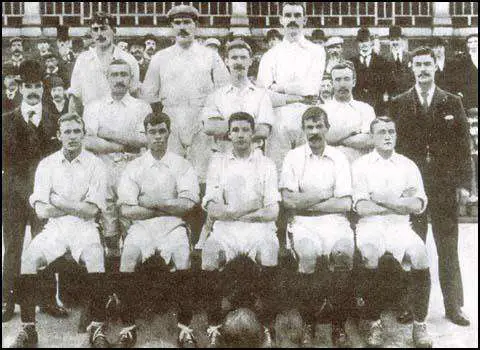
The first competitive match between these two came in December 1899. It was a Fifth-Round qualifying match for the FA Cup. Millwall won the fixture 2-1 with goals coming from Hugh Goldie and Bert Banks.
Millwall ended up reaching the semi-final where they were beaten by Southampton.
Despite the loss, something good came of it. The media, amazed by the journey of that Millwall team and their fighting spirit, heralded them as “The Lions of the South”. And so they gained the nickname of “The Lions”.
The first match programme for Thames Ironworks vs Millwall.
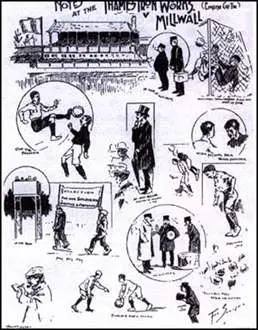
The second match between Millwall and West Ham was a weird one. It was called off after 69 minutes (hehehehe) because of heavy smog. Millwall were leading 2-0. Rather than contest a replay, the match was continued 4 months later AFTER the reverse fixture. West Ham won the replay 1-0. After that and a short cooldown, the remaining minutes were played straight away where Millwall kept their 2-0 lead intact.
From the seasons of 1901 through to 1903, both rivals met seven times in each season, the most meetings in a season between them. They respectively competed in the London League, Southern League, Western League and the Southern Professional Charity Cup.
Millwall dominated the majority of these meetings; being unbeaten in 12, drawing 3 times and winning 9 times. This run included a 7-1 win over West Ham in a semi-final.
The Hammers’ first game at Upton Park broke the streak. They won 3-0 against Millwall.
The first signs of violence between these two sides came in September 1906. The East Ham Echo reported that “from the very first kick of the ball it was seen likely to be some trouble”. Millwall had two of their players sent off which riled up the crowd and wound up in many fights on the stands.
Soon after, Millwall dropped the “athletic” from its name, moved out of East London and into The Den (today known as “The Old Den”).
The Old Den (1910 – 1993) B-E-A-UTIFUL ground.
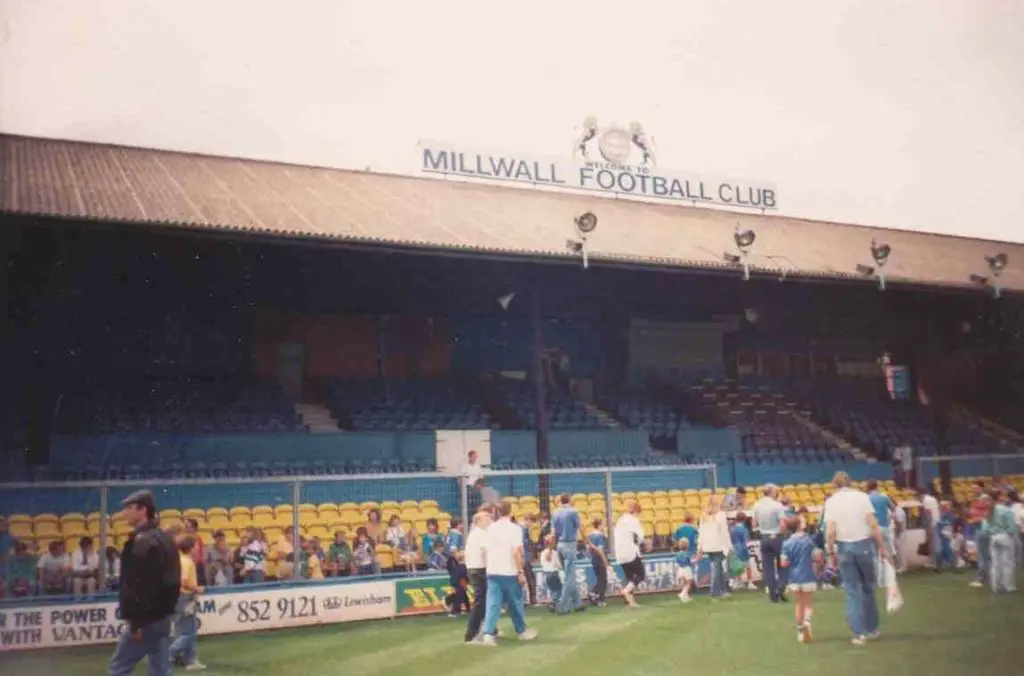
Boleyn Ground (aka. Upton Park) – 1904 – 2016
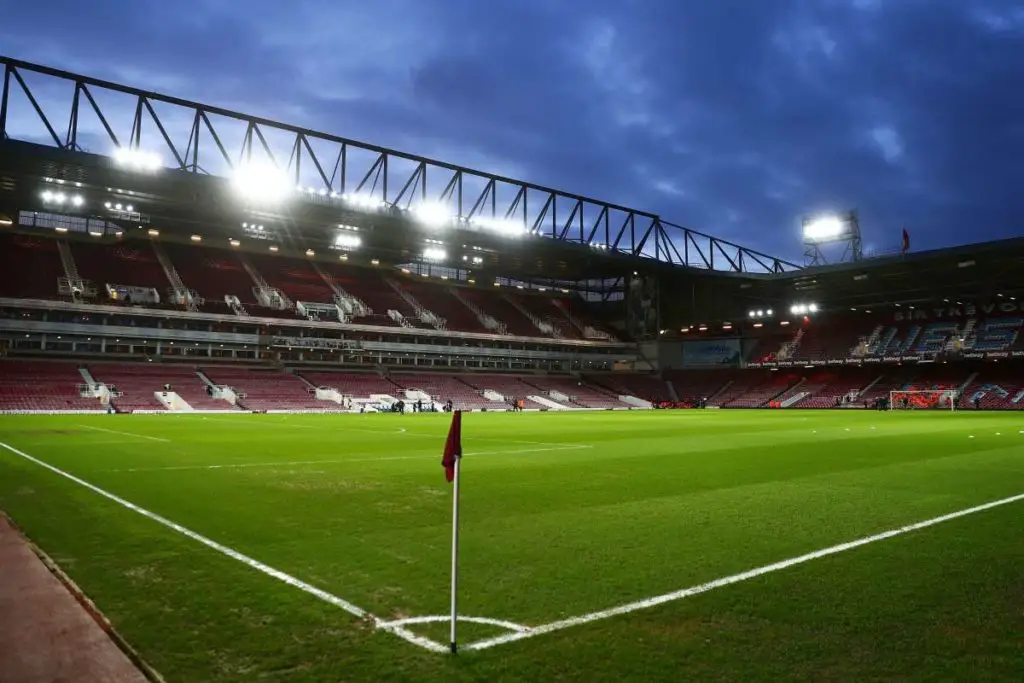
Part II – The Violence
World Wars 1 and 2 saw both sides compete in a total of 33 matches. It’s worth noting that in these matches, supporters were ardently against each other not just for the clubs’ sake but because they were workers of opposing docks/companies who were vying for the same business. As there was a war going on, they couldn’t field particularly strong sides. This meant that matches usually consisted of junior players, reserves and even non-professional players who just fancied a kickabout.
1926 saw another chapter written in this rivalry. Economy was getting tougher for the dock workers and a General Strike took place by the East End workers. The majority of those workers were West Ham supporters so you can imagine the outrage when the Millwall supporting dock workers refused to help. Rivalry between football clubs is one thing. But the lack of support from one group of workers to another was a whole new level.
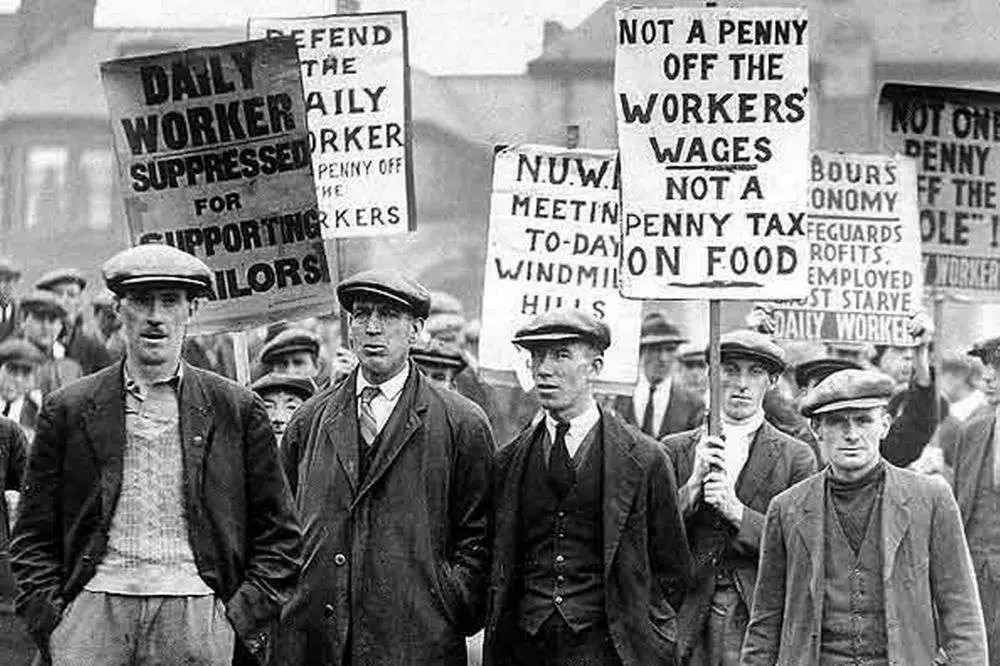
Fast forward to the 1960s. Millwall were not doing very well by then. They had dropped to the Third and Fourth Division due to poor performances/results. This resulted in West Ham and Millwall not competing against each other at all between 1959 and 1978.
Despite meeting so infrequently, the rivalry did not die. Supporters were still very much affirmative that the rivalry was still intact.
Much to Millwall’s despair, West Ham enjoyed considerable successes during this time –
- FA Cup Winners in 1964, 1975 and 1980.
- European Cup Winners’ Cup in 1965
The rivalry took an ugly turn from the 70s.
Football hooliganism culture was arising and the main clubs to be influenced by this were West Ham and Millwall.
On West Ham’s corner was the Inter City Firm (ICF). This group is said to be a combination of a number of other West Ham-oriented groups such as the East Essex London Firm and Mile End Boys that commit riots, instigate fights at football matches and commit organised crime.
The ICF’s most notable action is in leaving calling cards after committing criminal activities and riots; reading – “Congratulations, You Have Just Met the I.C.F.”
On Millwall’s corner was the Millwall Bushwackers. They had their own incidents and activities too.
To name some of the most notable –
- Millwall defeated Brentford 2-1 away at Griffin Park in 1965. During this game, hand grenades were lobbed onto the pitch from the Millwall end. Chic Brodie (Brentford’s goalkeeper) picked it up like it was a potato and chucked it into his goal. When police later inspected it, they were relieved to find out that it was fake.
- In 1966, QPR defeated Millwall by 6 goals to 1. Both sides were near top of the league and were competing to get into Division Two. When a coin was thrown onto the pitch and injured a player, the stadium announcer warned that the game would face abandonment. The best course of action according to the Millwall fans was to invade the pitch to deliberately get the game abandoned. The game was not abandoned, lol.
- Plymouth Argyle ended Millwall’s run of 59 unbeaten home games in 1967. In response, the windows of the away team’s coach were smashed up.
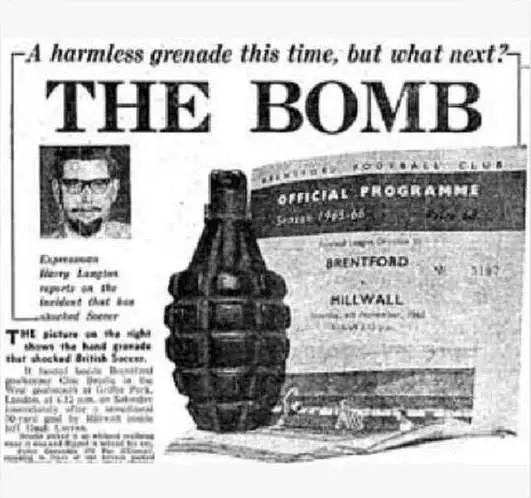
Fighting and troublemaking would be almost like a stamp in the West Ham and Millwall games during this period.
The violence only worstened. Both firms belonging to West Ham and Millwall didn’t just turn violent against each other but also against the police and other teams’ firms. Even when it came to a candid occasion such as a testimonial match for Harry Cripps (a former West Ham player) neither side could stop themselves from breaking out into scraps.
Another crude and grotesque page of the book came when a Millwall supporter was killed by a train in 1976 during a fight with West Ham supporters. West Ham United hooligans thus constructed the chant –
“West Ham boys, we’ve got brains, we throw Millwall under trains.”
This left a terrible taste not only for both clubs and their supporters but around English football as a whole.
Before the next game between the two sides in 1978, the police force prepared themselves. Leaflets were found being distributed saying – “A West Ham fan must die to avenge him”.
Circa. 500 officers turned up for crowd control, enforcing strict segregation methods and thorough bag/person searches. West Ham won 3-0 and before we knew it, 6 officers were injured and around 70 arrests took place.
On the 4th of October 1987, in both clubs’ first meeting in seven years, a 19-year-old tragically passed away after being stabbed to death by a group of Millwall supporters in a tube station. To this day, the exact perpetrators have not been caught and the death remains unsolved (http://www.unsolved-murders.co.uk/murder-content.php?key=817&termRef=Terry%20Burns).
The 88-89 season saw both clubs compete in their only top-flight season together. With Millwall getting relegated the following season, they have never returned to the top-flight to this day.
When the Premier League as we know it today was founded in 1992, both clubs started in the old First Division (the Championship). West Ham were promoted that season finishing second and Millwall finished seventh.
Part III – The Silence
The tragic Hillsborough Disaster saw that Millwall had to abandon their beloved Den for “The New Den” (today known simply as “The Den”). This was because all stadiums had to be strictly all-seaters which the Old Den wasn’t. Twelve years passed before the Hammers would play in the New Den. This was because of their Premier League promotion which lasted for 10 seasons.
On the 24th March 2004, both clubs met in the Championship where Millwall beat West Ham 4-1. The Millwall goals came from a young Tim Cahill (2), an own goal from Christian Dailly and a goal from Nick Chadwick who was on loan at the time. Marlon Harewood scored the only goal for the Hammers. In a massively eventful game, Millwall missed one penalty and had another saved by the Hammers’ goalie who was also sent off.
The subsequent violence afterward gave this game the nickname “The Mothers’ Day Massacre”.
If you’d like to watch the highlights, here they are – https://www.youtube.com/watch?v=SPeCljyOnA0
And for the full match – https://www.youtube.com/watch?v=jW0ruCp_1zo&t=10s
By the way, West Ham finished the season in the playoffs (and lost at the final to Crystal Palace) whilst Millwall finished tenth.
Despite finishing tenth, Millwall got to the UEFA Cup first round (today known as the UEFA Europa League) after losing to Manchester United in the FA Cup final of that season. Since United were already in the Champions League, they got the UEFA Cup. Unfortunately, they crashed out in the first round, losing 4-2 on aggregate to Ferencváros.
Crystal Palace 1- 0 West Ham United (Play-off Final 2004)
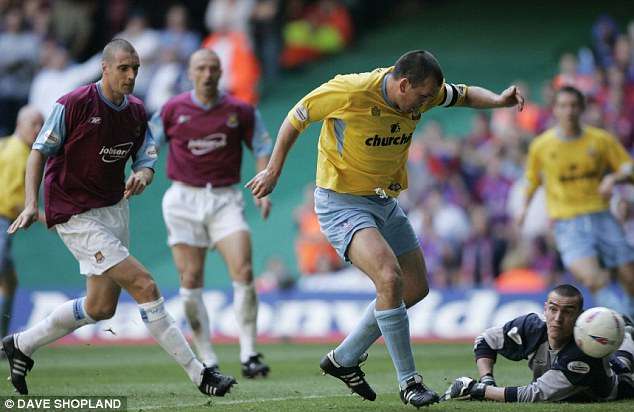
Manchester United 3 – 0 Millwall (2004 FA Cup Final)
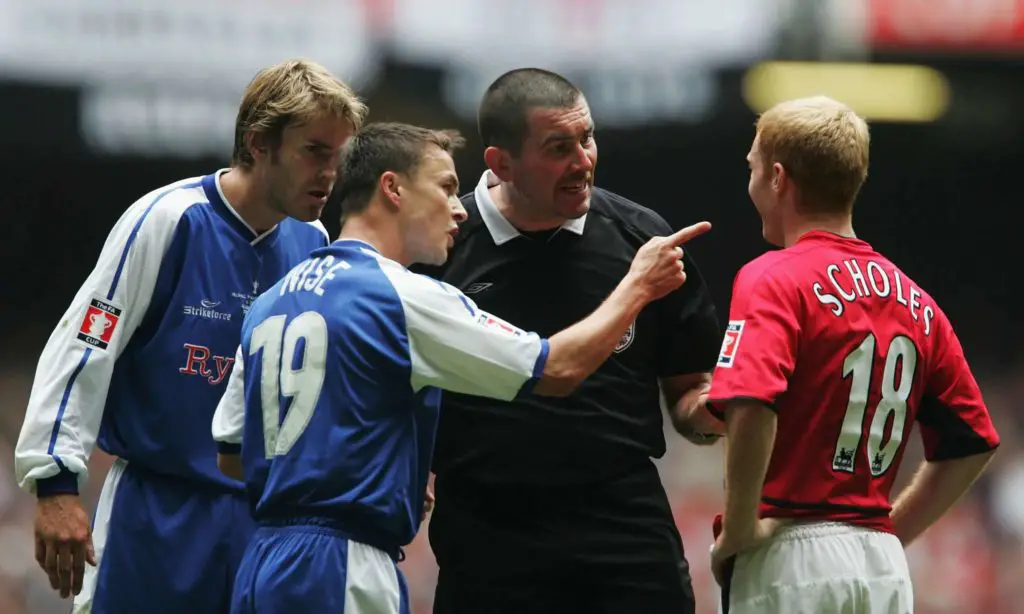
The most recent notable meeting between both clubs came in the 2009-2010 season. Both clubs were drawn in the League Cup and once again, the police enforced safety methods to reduce the violence. Travelling Millwall supporters were only given 1,500 tickets (opposed to the usual 3,000).
Millwall’s board warned the police with caution. Since these tickets were reduced, fans were bound to be even angrier; therefore causing a higher probability of trouble. West Ham won the fixture 3-1 after extra time. Both clubs’ fears came true, with violence taking place before, during and after the match.
After a full investigation, the police concluded that a large portion of the violence was organised. Misconduct charges were dished out by the FA for both clubs. A disciplinary tribunal, however, was not so split down the middle to say the least –
- £115,000 fined to West Ham United (for failing to ensure that fans did not enter the field of play and refrained from violence).
- Allegations of Millwall’s misconduct (violence, racism, missile-throwing onto the pitch) was ‘not proven’. They were cleared of all charges.
Here is a report of the match from the time – https://www.youtube.com/watch?v=Ma83o5WVn-4
This match sparked a real response from the Government. Yes, hooliganism was known of. It was not new. But what WAS new was the fact that this was still happening after years and decades of the beautiful game’s progress. The sports minister (Gerry Sutcliffe) stated – “We have made great progress in tackling hooliganism in this country and will not return to the dark days of the 80s.” He went on to call the incidents that happened a “disgrace to football”.
West Ham were relegated from the Premier League in the 10-11 season. Avram Grant did a poor job with only seven wins in 37 games. In the be-all-end-all game for the Hammers, they lost 3-2 to Wigan Athletic. An aircraft trailed over Wigan’s ground, flying a banner that read – “Avram Grant – Millwall Legend”. Grant was sacked after that fixture. I think we know who was responsible for the aircraft.
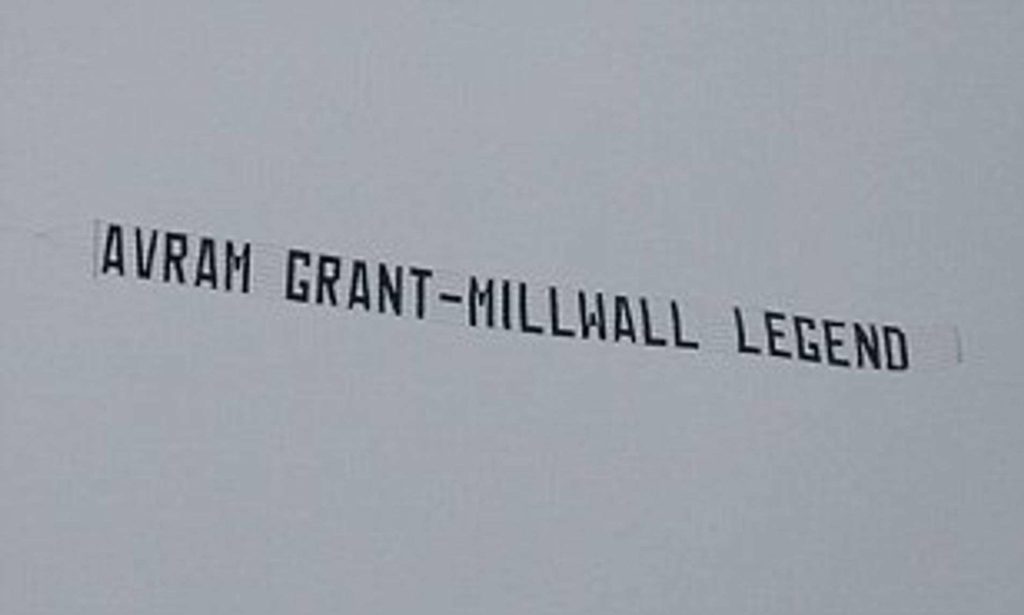
In the next Championship season, both clubs met in a 0-0 draw at the Den and a 2-1 win for West Ham at Upton Park.
For the curious –
Millwall 0-0 West Ham
Article – https://www.theguardian.com/football/2011/sep/17/millwall-west-ham-united-championship.
Highlights and a bit of history too! – https://www.youtube.com/watch?v=CvvHUpf-9YY
West Ham 2-1 Millwall
Article – https://www.bbc.co.uk/sport/football/16778942
Highlights – https://www.youtube.com/watch?v=yUN3JJPzdf4
____________________
The latter of those fixtures remains their last encounter to date.
Fixtures between both sides are officially listed under Category C – games which carry a high risk of disorder amongst supporters.
Despite the grotesque history between these sides, I personally have a bit of hope that this rivalry can move away from the violence and disorder and gain a new reputation of a simple on-pitch exciting match day. In 2018, both clubs but their rivalry aside when a young West Ham fan suffering from cancer needed funds for treatment. In a pure show of bravery and respect, a Millwall fan put on the West Ham kit and ran from the Den to the London Stadium to help raise funds.
The football world is moving. This intense match hasn’t taken place for a decade now and there hasn’t been much buzz between both sets of fans for a while. Who knows if anything has changed or stayed the same?
But something I will say is that this match will certainly happen again and when it does, the English footballing world will have its eyes on it and will brace themselves with tension to witness the most significant and fascinating fixture in English football.
Bonus material – https://www.youtube.com/watch?v=g1cLJWeexr0







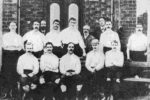

2 Responses
Nice effort but lots of inaccurate information.
Very inaccurate…no mention of the strikes in the late 1800’s, when the workers walked out for “The Dockers tanner”, nor of the awful practices of the Thames Ironwork supervisors, who three the metal token (which one needed to work) into a cage so that the would be workers could fight over them.